Field schools are one of the highlights of summer at Coast Mountain College (CMTN), especially for our international students. In May, 33 international and two domestic students from the CMTN Applied Coastal Ecology (ACE) program at our Prince Rupert Campus had the opportunity to explore the natural beauty and ecological diversity of Haida Gwaii on a four-day field school camping trip.
Haida Gwaii is a remote archipelago of more than 150 islands located about 100 km off the coast of British Columbia. The islands are the unceded territory of the Haida Nation and are home to an abundance of wildlife, including several distinct subspecies. With their unique ecosystems and biodiversity, they are an amazing location for the hands-on learning that characterizes CMTN summer field schools.
Students were split into three smaller groups over three weeks to provide more focussed learning, and all three Haida Gwaii field school trips were led by ACE Instructor Josh McDonald and assisted by Karen Buchanan, Field School Technician. Photographer Tanya Huether, from the CMTN Marketing Department, also went along with two of the three groups to document the adventures. Below you’ll find a selection of photos from the field schools along with a few more details about the trip.
Day 1
After travelling from Prince Rupert to Haida Gwaii on the overnight ferry with BC Ferries, students transferred their camping and personal gear to the boat provided by Haida Style Expeditions with the help of Captain Sk’aal Ts’iid (Flicker Bird - James Douglas Cowpar) for the trip to Louise Island.
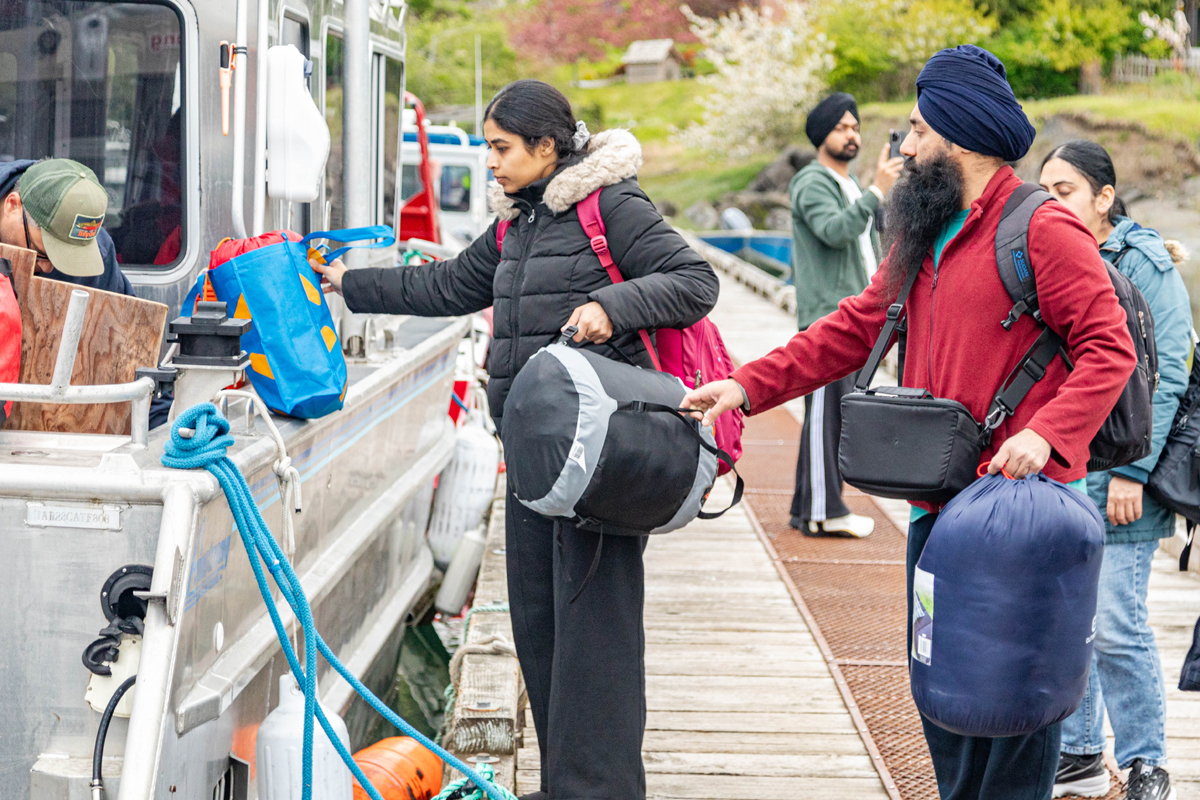 Students loading the Haida Style boat at Daajing Giids.
Students loading the Haida Style boat at Daajing Giids.
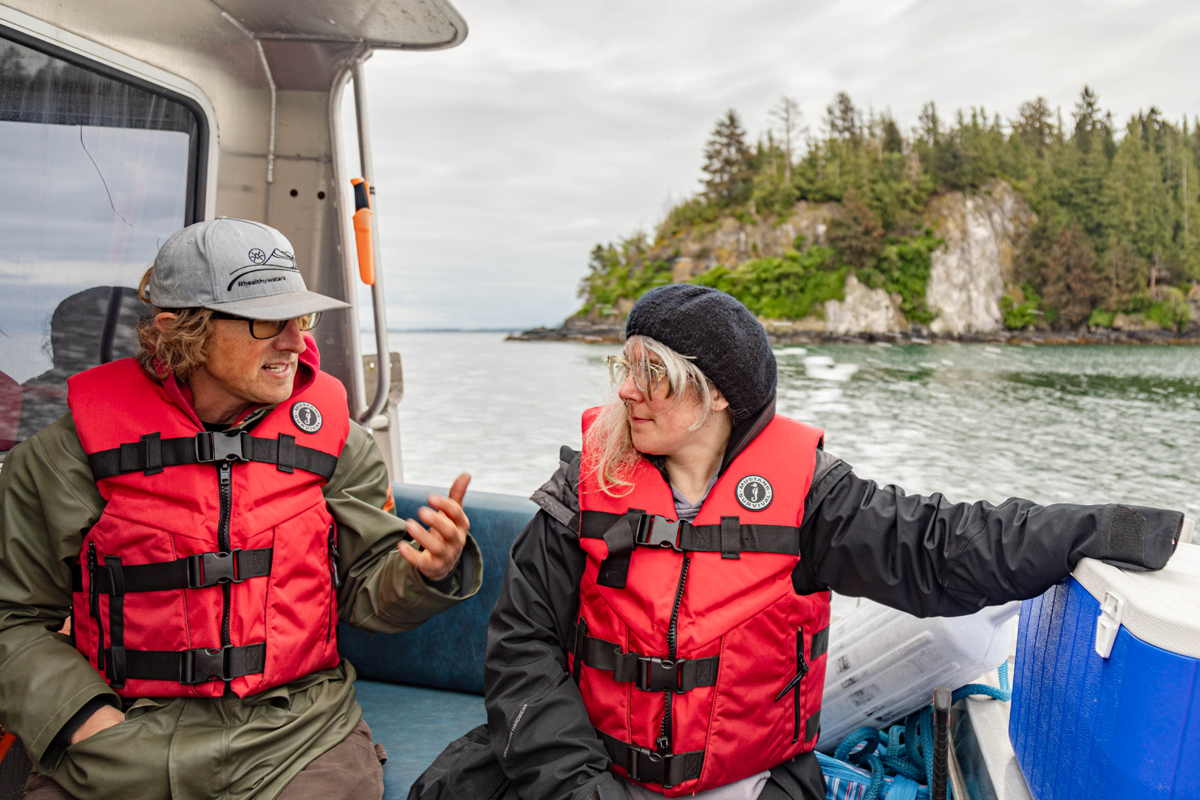 Josh and Karen chatting on the trip to Louise Island.
Josh and Karen chatting on the trip to Louise Island.
On arrival at the camping site on Louise Island, the first task was getting the campsite set up. For many students this was their first wilderness camping experience and setting things up was all part of the adventure.
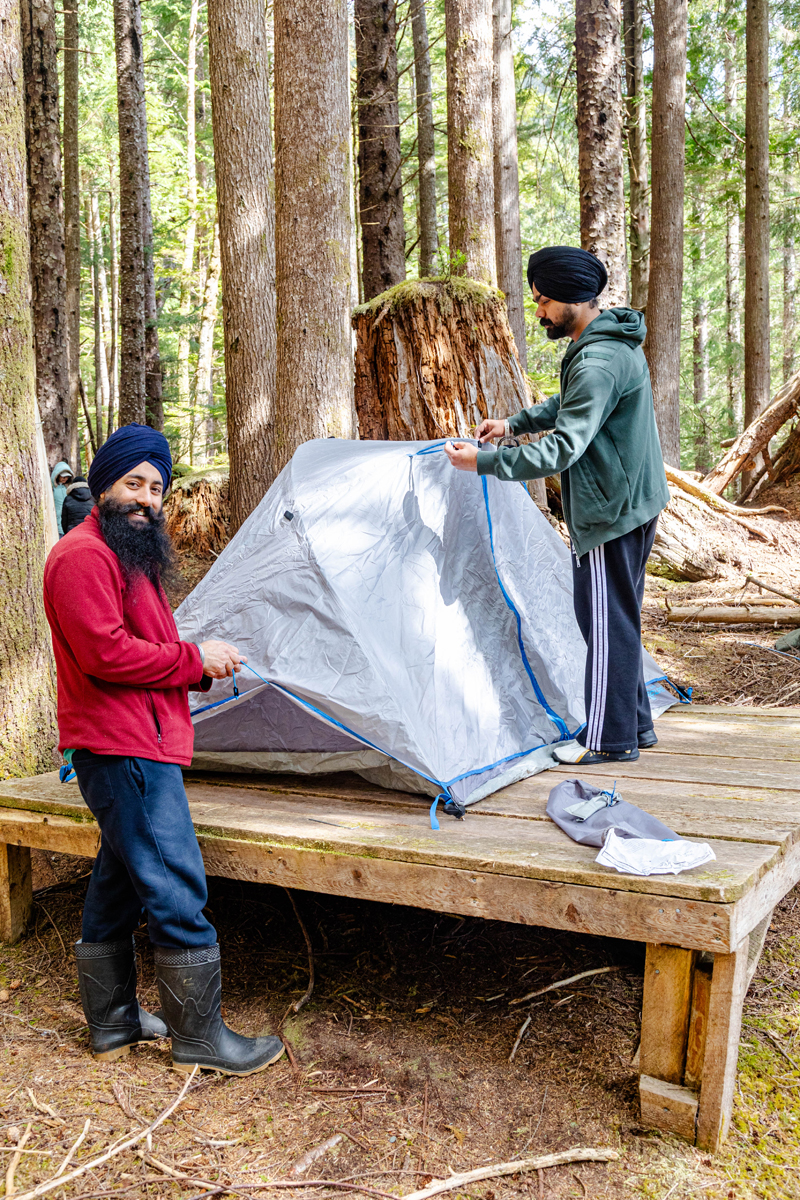 Getting the tents set up.
Getting the tents set up.
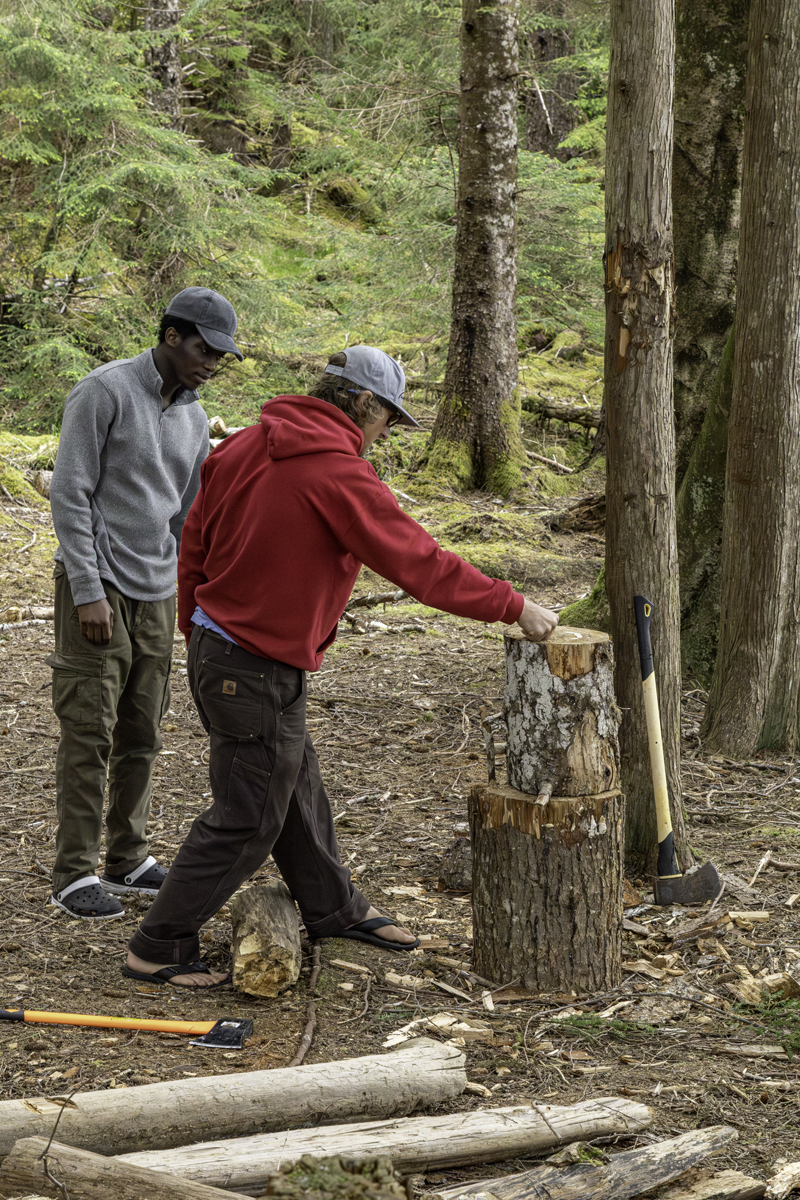 Josh demonstrates wood chopping skills.
Josh demonstrates wood chopping skills.
The rest of the first day was spent exploring the diversity of the intertidal zone with instructor Josh McDonald. Students observed and identified a wide variety of marine species including giant red sea cucumbers (Parastichopus californicus), leather sea stars (Dermasterias imbricata), Lewis’s moon snails (Neverita lewisii), and helmet crabs (Telmessus cheiragonus), along with many other types of sea life.
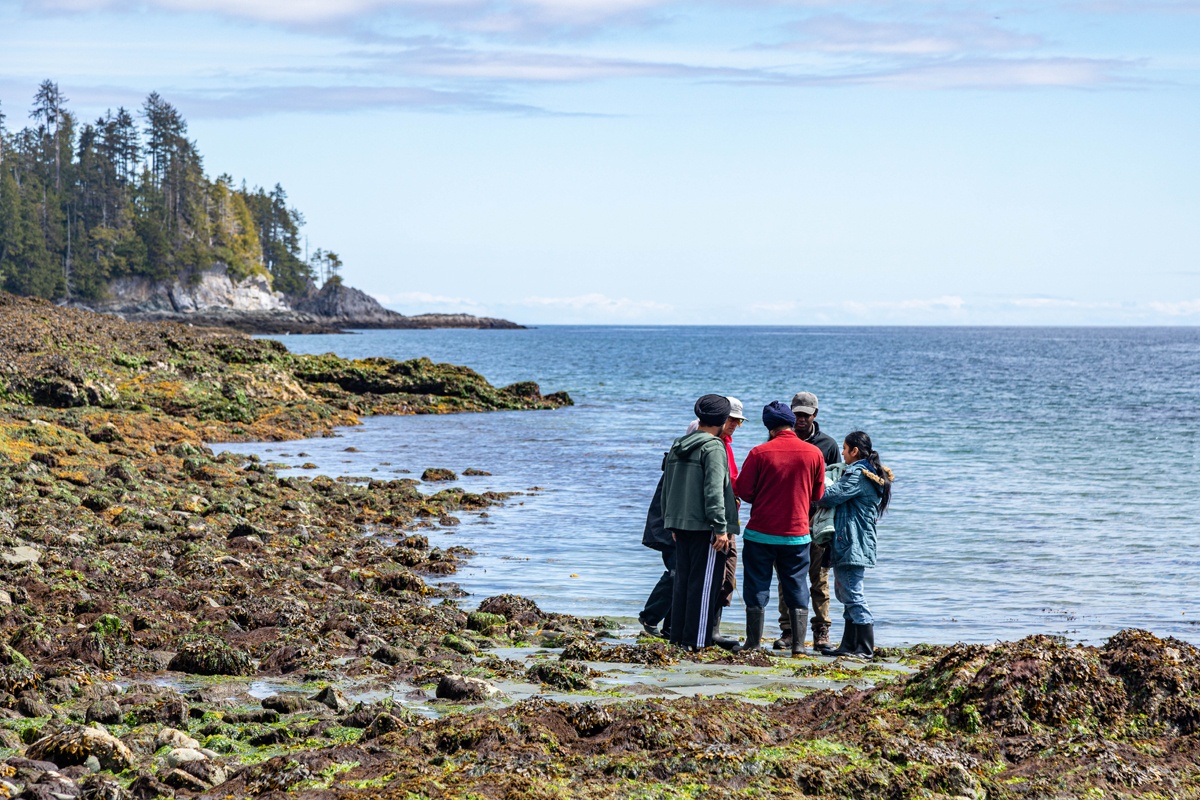 Exploring the intertidal zone at Laskeek Bay.
Exploring the intertidal zone at Laskeek Bay.
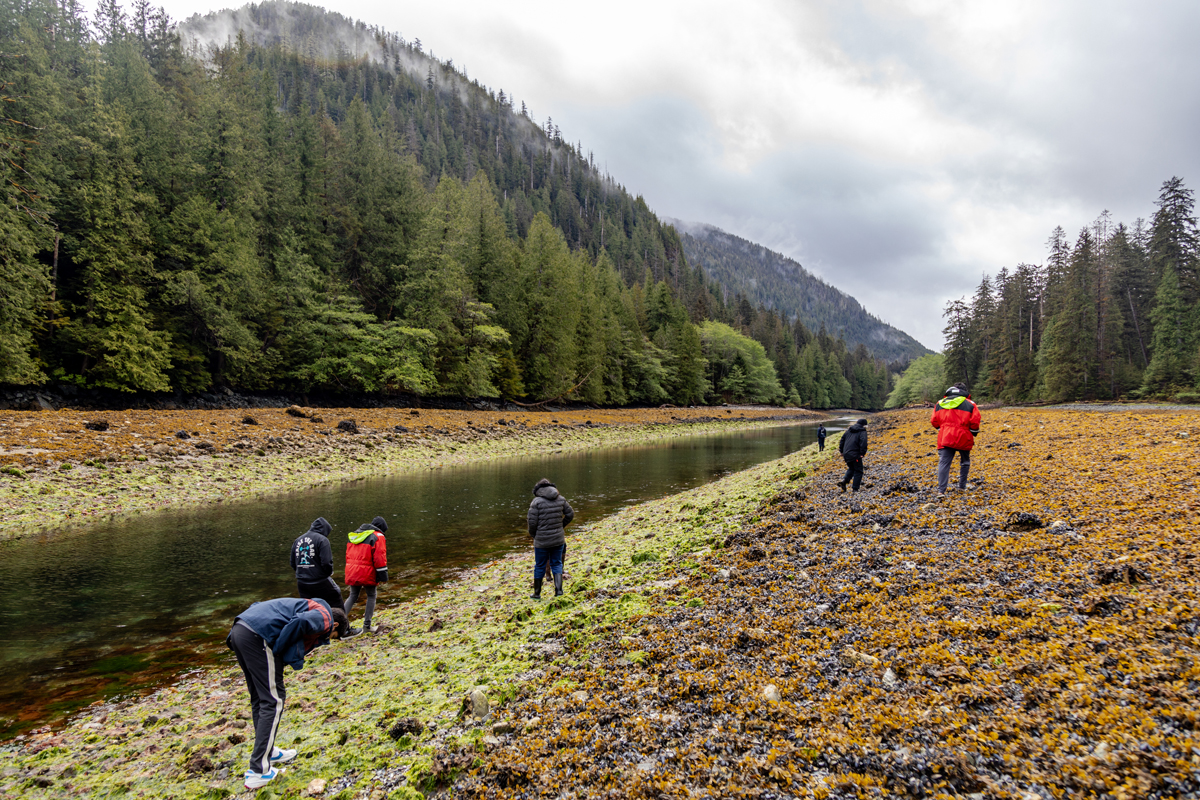 Exploring the intertidal zone at Louise Narrows.
Exploring the intertidal zone at Louise Narrows.
 Karen with a giant red sea cucumber.
Karen with a giant red sea cucumber.
 Leather sea star.
Leather sea star.
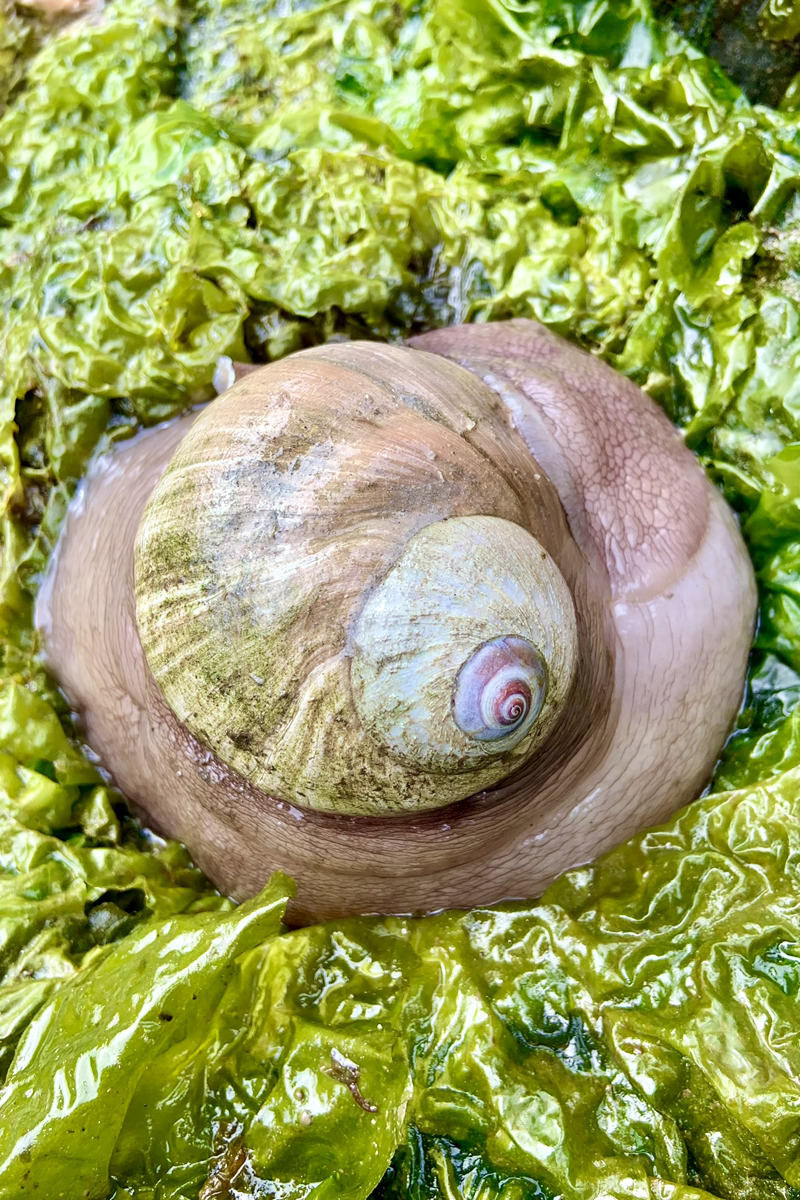 Lewis's moon snail.
Lewis's moon snail.
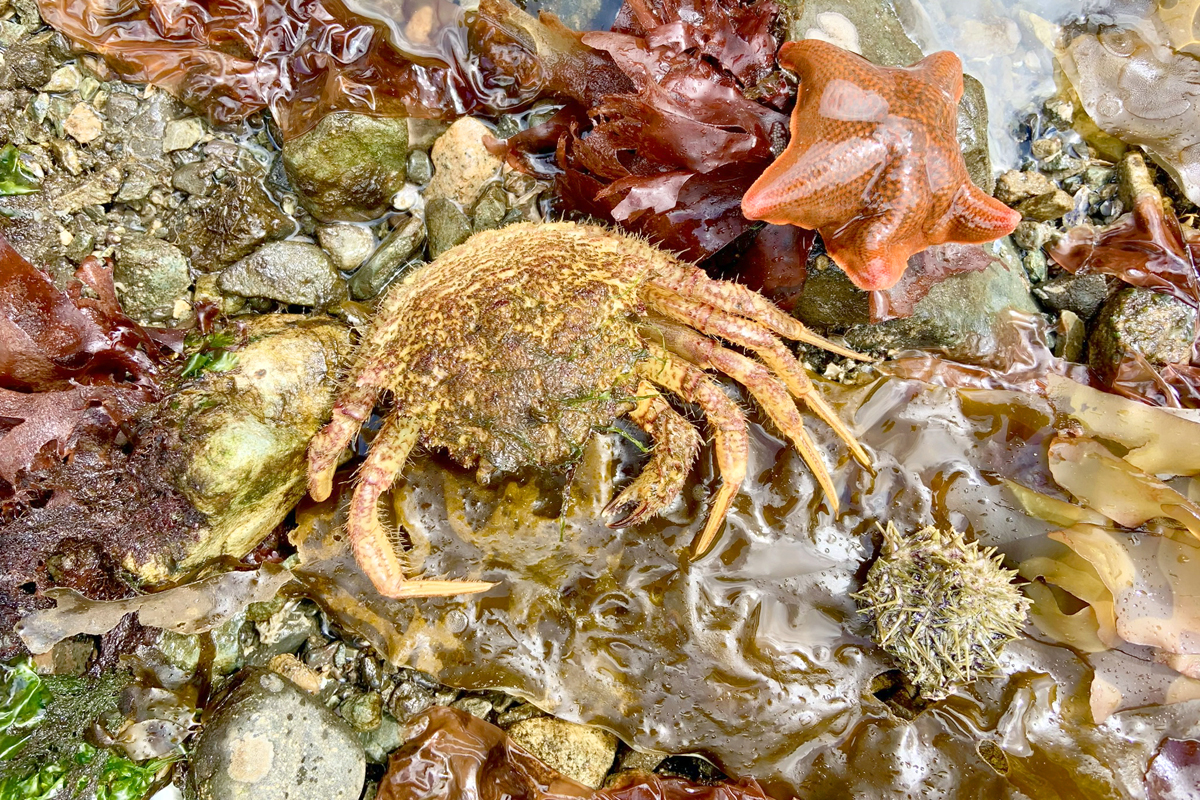 Helmet crab with other sea life.
Helmet crab with other sea life.
 Josh helps a student identify sea stars.
Josh helps a student identify sea stars.
Day 2
On the second day of the trip, students had the rare opportunity to visit the Laskeek Bay Conservation Society station on East Limestone Island where they learned more about local wildlife, and in particular the nesting and migration habits of ancient murrelets (Synthliboramphus antiquus), a main research focus at the station. Since the station is not open to the public, and tours are limited to educational groups, this was one of the highlights of the trip.
 Arriving at East Limestone Island for the visit to the Laskeek Bay Conservation Society station.
Arriving at East Limestone Island for the visit to the Laskeek Bay Conservation Society station.
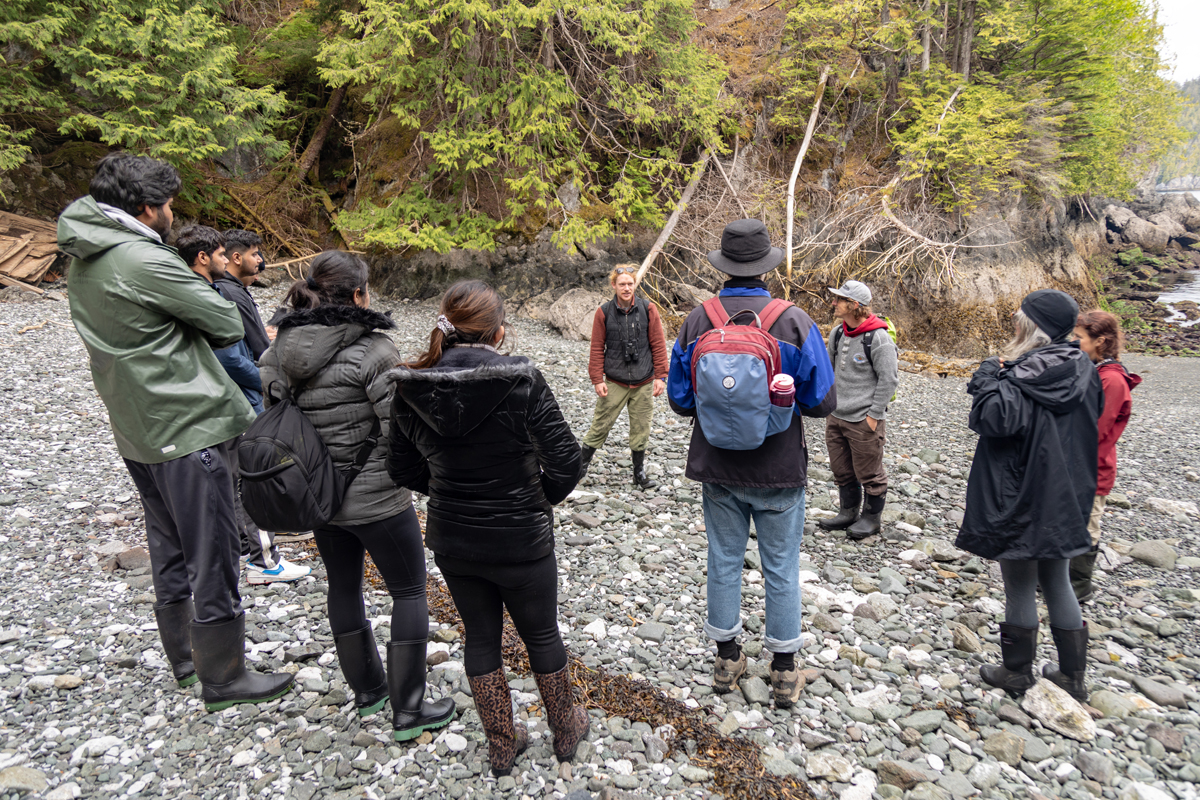 Biologist Matt Peck tells students about East Limestone Island.
Biologist Matt Peck tells students about East Limestone Island.
 Biologist Rian Dickson tells students about ancient murrelet nesting habits.
Biologist Rian Dickson tells students about ancient murrelet nesting habits.
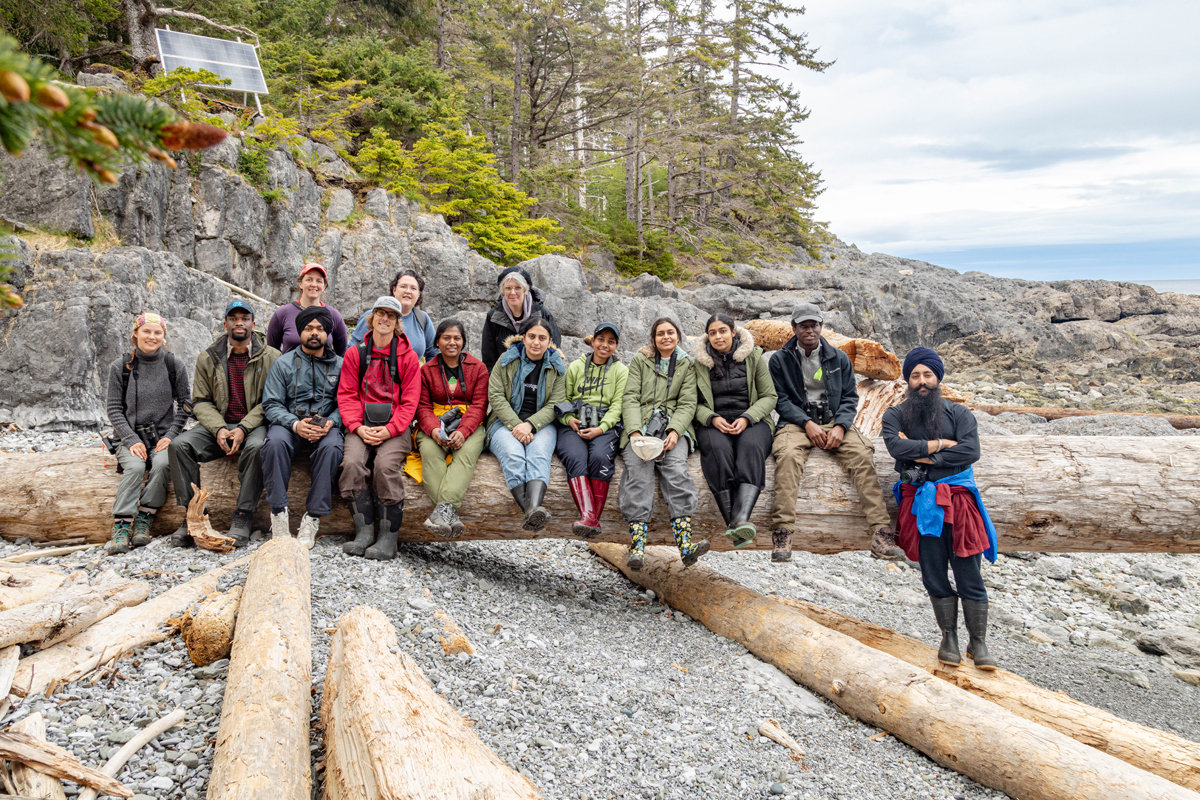 Students at the Laskeek Bay Conservation Society station.
Students at the Laskeek Bay Conservation Society station.
Day 3
On the morning of day three, students packed up their tents and other gear, and Haida Style Expeditions returned to ferry the group back to Graham Island. The boat trip back included a stop at K’uuna Llnagaay (Skedans), a former Haida village location and one of five important cultural sites that is monitored by the Haida Watchmen program. The watchmen give tours of the site and share cultural and historical details about K’uuna.
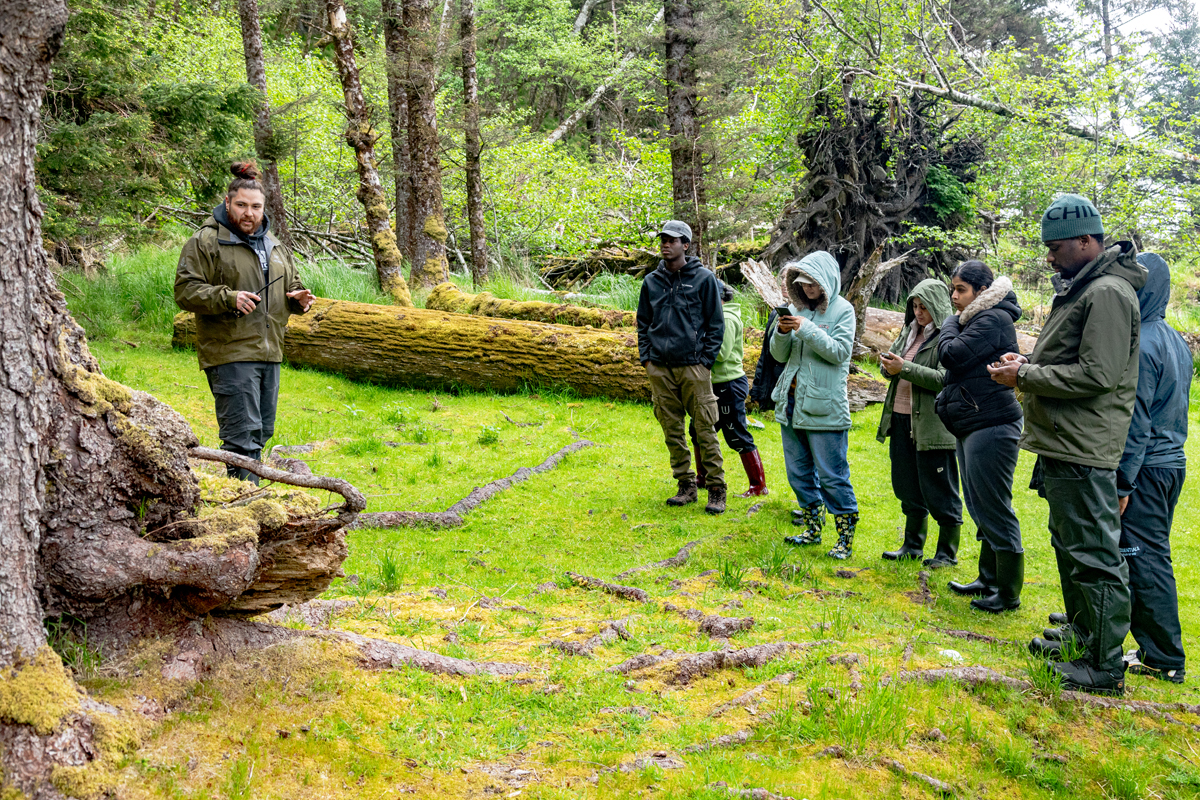 The guide at K'uuna tells students about one of the carvings.
The guide at K'uuna tells students about one of the carvings.
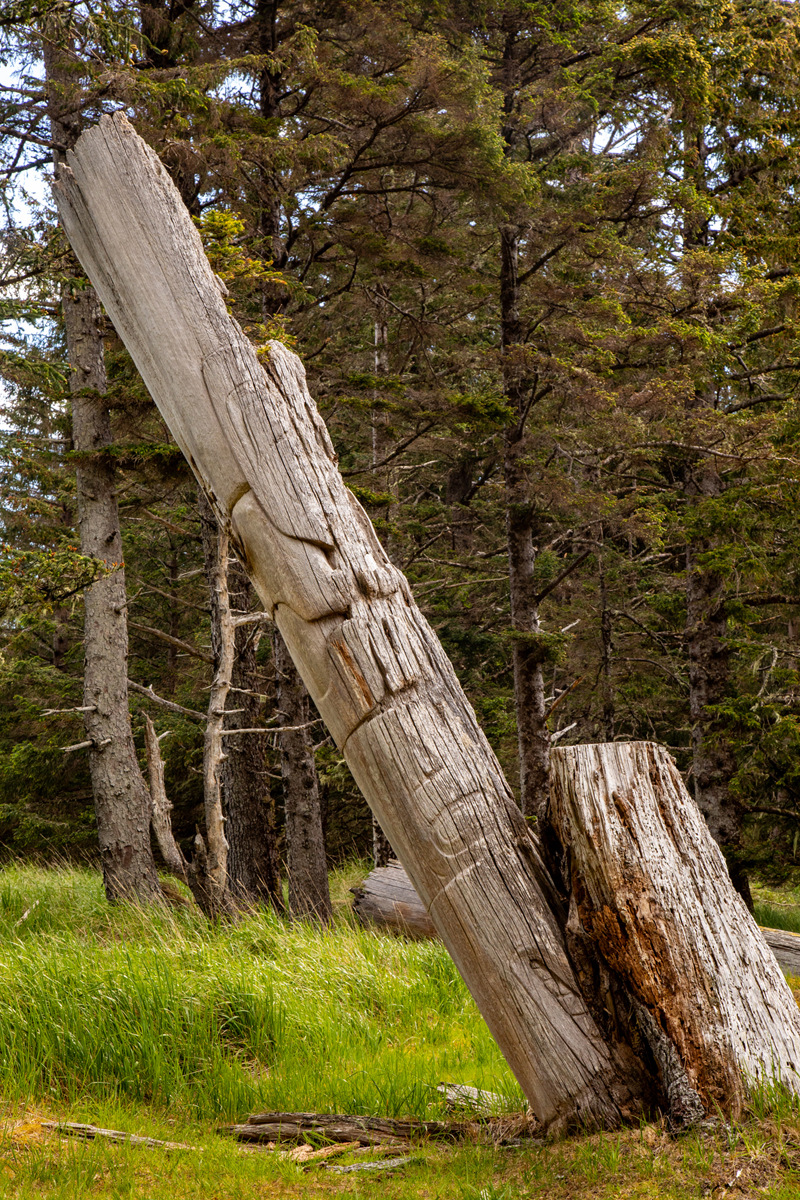 A carved mortuary pole at K'uuna.
A carved mortuary pole at K'uuna.
 Sitka black-tail deer, like this one at K'uuna, are a problematic introduced species on Haida Gwaii.
Sitka black-tail deer, like this one at K'uuna, are a problematic introduced species on Haida Gwaii.
 View of the beach at K'uuna.
View of the beach at K'uuna.
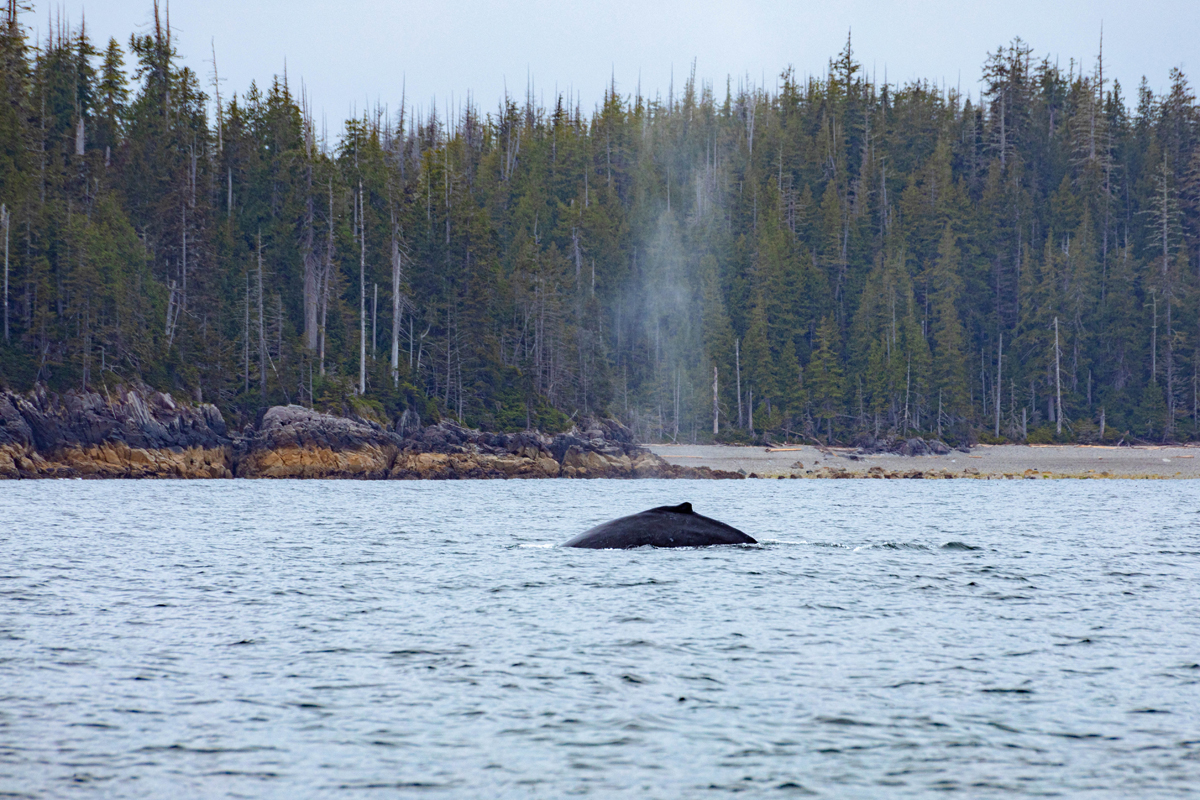 Students in the first group were lucky enough to spot a humpback whale on the trip back to Daajing Giids.
Students in the first group were lucky enough to spot a humpback whale on the trip back to Daajing Giids.
 Students enjoyed trying salmon sandwiches made with canned salmon gifted by Haida Style.
Students enjoyed trying salmon sandwiches made with canned salmon gifted by Haida Style.
Day 4
On the last day of the tour, students hiked either up Tow Hill (first two groups) or to the Pesuta Shipwreck (third group) and then spent a few hours learning more about Haida culture and history at the Haida Heritage Centre at Kay Llnagaay before catching the overnight ferry back to Prince Rupert.
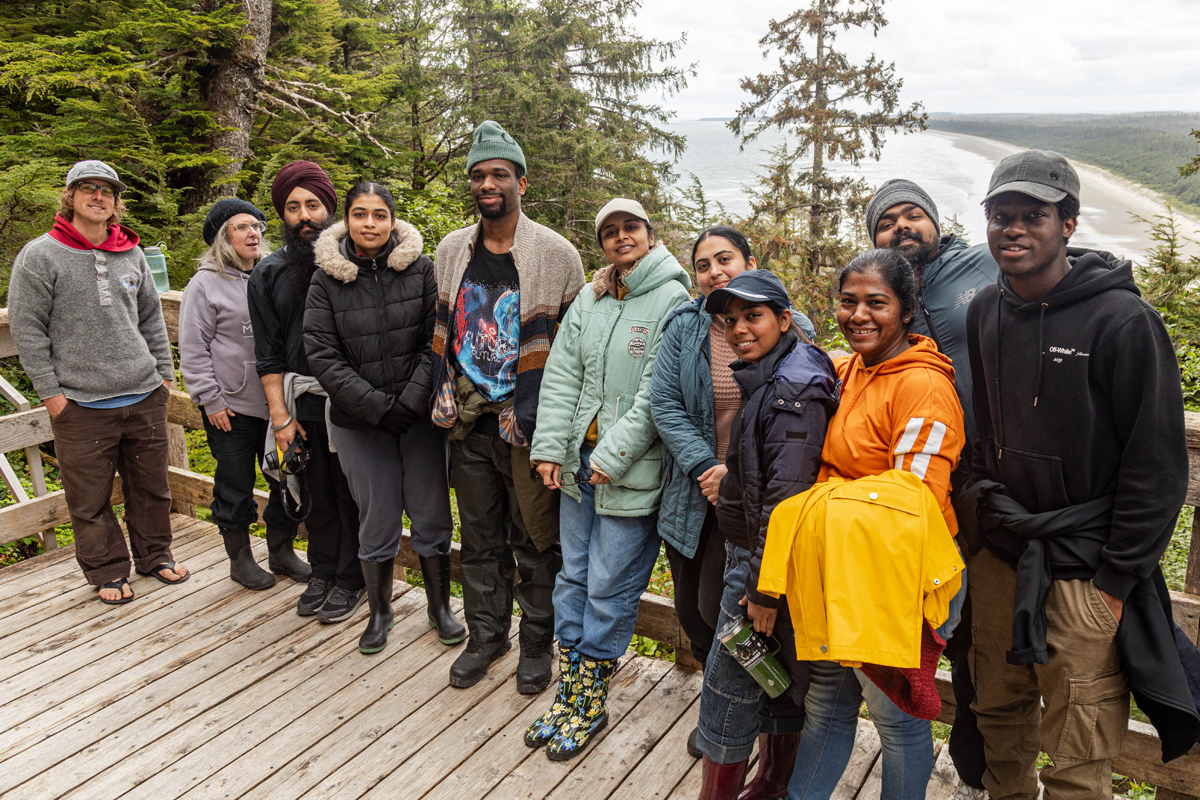 Students with Josh and Karen on Tow Hill.
Students with Josh and Karen on Tow Hill.
 Students with Josh at the Pesuta Shipwreck.
Students with Josh at the Pesuta Shipwreck.
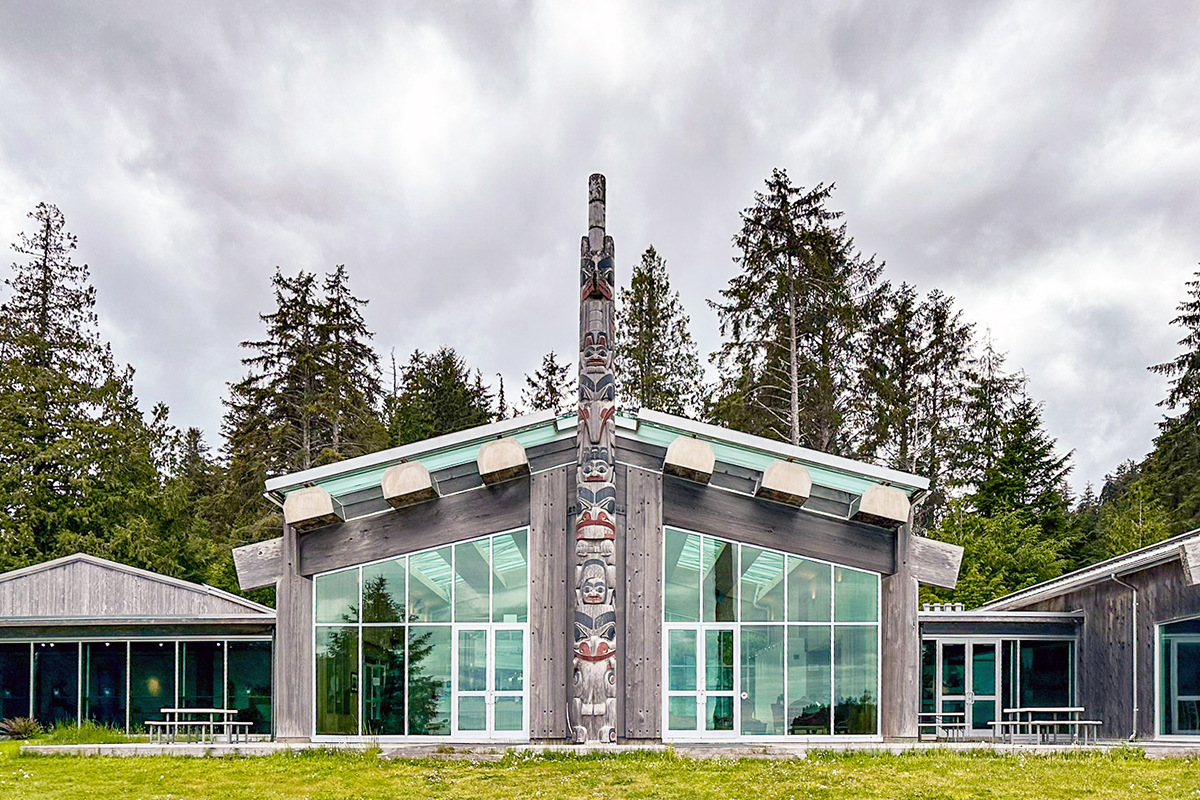 The Haida Heritage Centre at Kay Llnagaay.
The Haida Heritage Centre at Kay Llnagaay.
And of course, students also enjoyed time around the campfire sharing food, telling stories, and playing games each evening before heading to their tents for some sleep. At the end of each tour, students nearly unanimously agreed that, despite wind, rain, and tired feet, the field school on Haida Gwaii had been an adventure they would never forget, and that they would definitely recommend the experience to future students, even if no one was too keen on adopting wilderness camping as a new hobby.
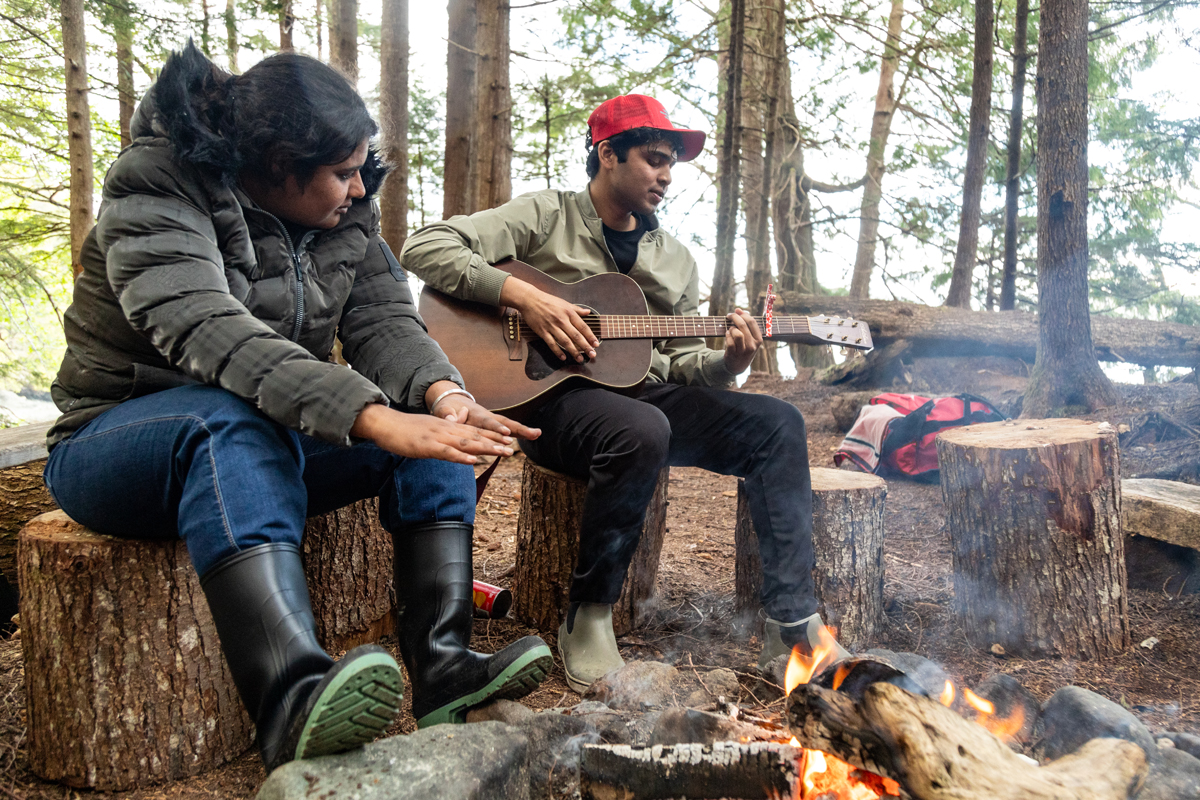 Enjoying some music around the campfire.
Enjoying some music around the campfire.
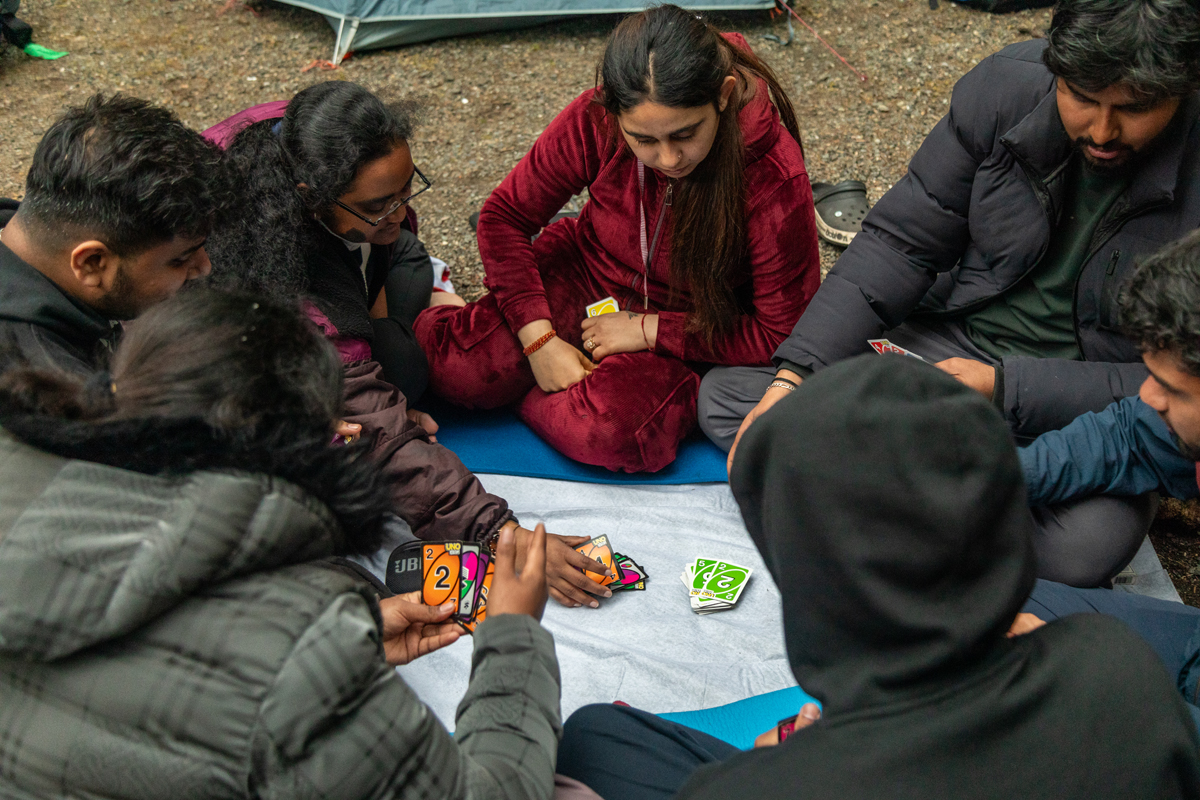 Playing a card game after dinner.
Playing a card game after dinner.
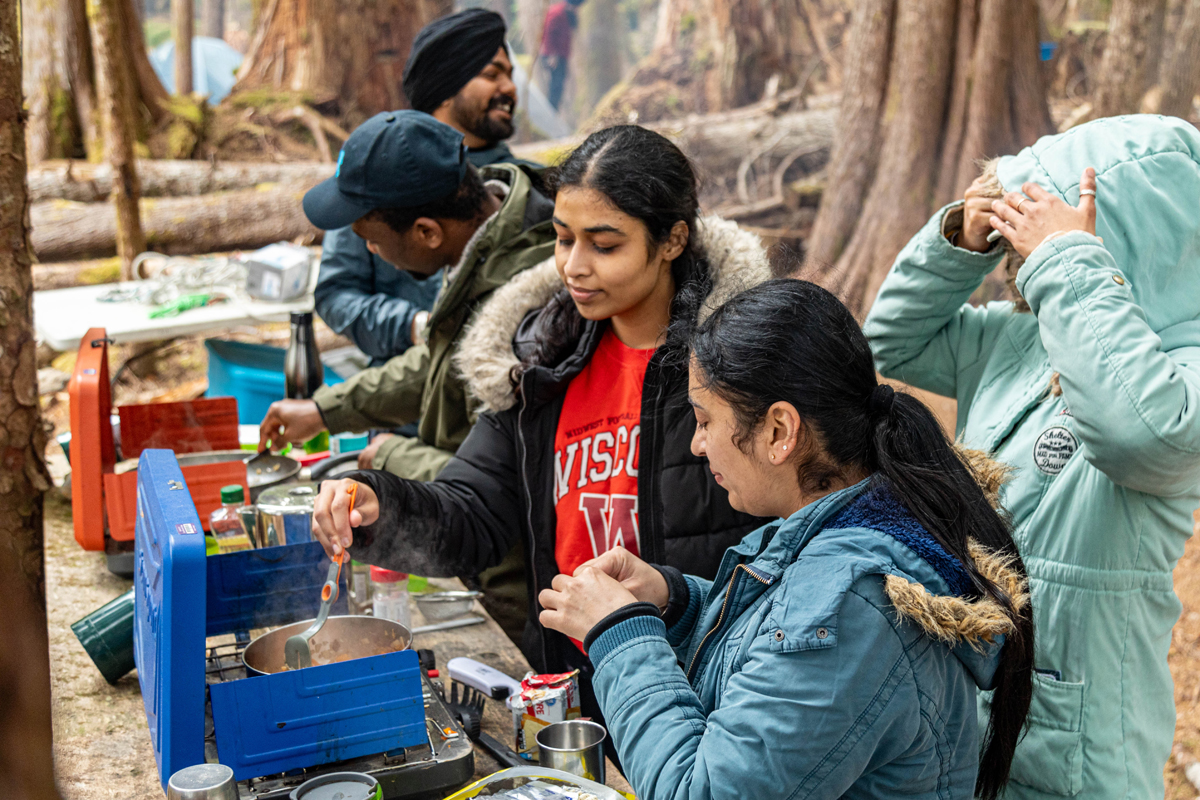 Cooking a meal together.
Cooking a meal together.
 Loading up the bus.
Loading up the bus.
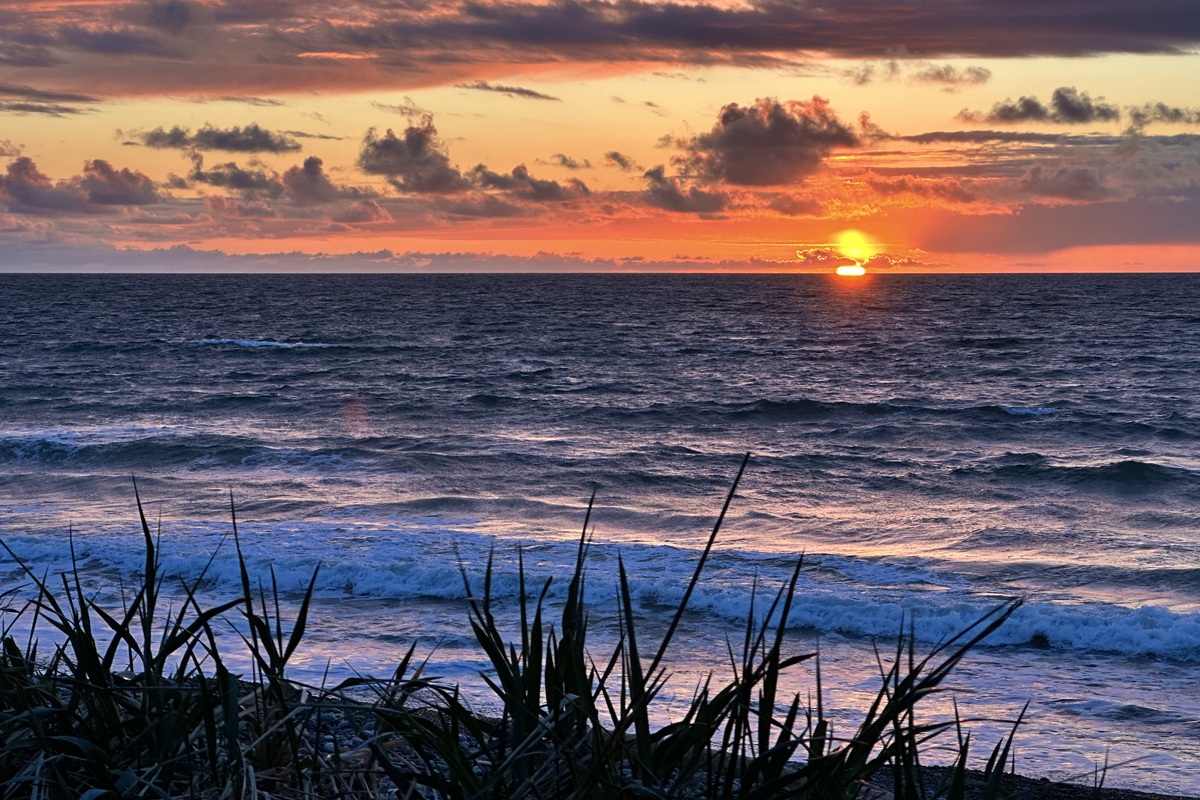 Sunset at Agate Beach on Haida Gwaii.
Sunset at Agate Beach on Haida Gwaii.
You can find more highlights from the ACE Haida Gwaii fields schools in this short Instagram reel.
###